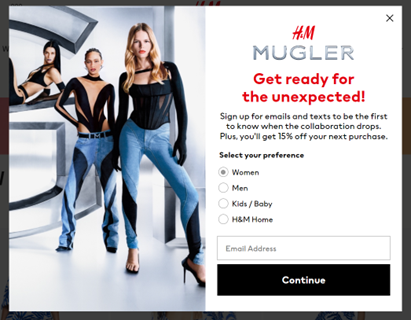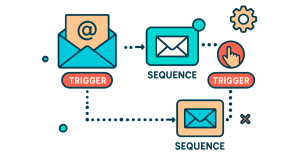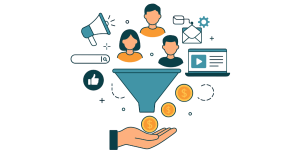Marketing Automation & Lead Generation
For some, marketing automation and lead generation go hand in hand while, for others, these two are completely separate ideas in their organization. For us, marketing automation is a key player in lead generation and is a solution that streamlines all the processes we have in place. Not only does aligning the two make everything more efficient, but it can also streamline the user experience for your customers and increase your sales.
How Lead Generation Works
Plenty of lead generation takes place on a digital landscape. We’re collecting contact information, prompting people to sign up, and taking steps to engage or re-engage leads. While the goal is to increase the number of leads and therefore sales, the actual tactic for getting there can vary from company to company. For example, some businesses may use social media to generate awareness with links in their stories or on their page to redirect customers. Others may have banners or pop-ups on their site that grab their customers’ attention while also offering discounts in exchange for contact information. And some use a combination of a variety of methods.
Benefits of Both
Lead generation is important because it’s what eventually leads to sales. You want to continuously generate new leads to put in your funnel. This can be done in a number of ways and involves lead generation specific strategies. It can look like networking at an industry happy hour or collecting contact information after an event.
On the other hand, marketing automation can help streamline everything by taking out the manual work. For example, rather than personally hitting send on every single welcome email, automation software does it for you as soon as it sees a predetermined trigger.
It takes two to tango and having both of these in place can help boost your success. Lead generation strategies can apply to all sorts of platforms from social media to website landing pages to email. With marketing automation in place, you’re able to pull double duty and move your customers through the sales journey while nurturing them into stronger down funnel leads.
Here’s one example of using marketing automation for lead generation — this H&M website modal.

Notifications like these show up on a page within seconds of someone entering a website. Not only are they great at grabbing attention, but they are also a useful way of automating the process of collecting a name, email, or any other data.
Lead Generation and Marketing Automation Best Practices
1. Define a quality lead
First off, ensure that everyone on the team is aligned on what a quality lead looks like for your brand. You’ll want to consider factors such as customer demographics like industry or interests, how often they’ve engaged (lead scoring), and any other past data you have at your disposal like the amount of time it takes to convert a customer.
2. Identify opportunities for automation
Now that you see the potential, you can look for areas in your company where automation can be put in place to help generate leads. Think about emails you send to your clients — reminder emails, requests to leave reviews, etc. Where on your website can you include automated lead generation? Consider chatbots, modals, etc.
3. Develop a lead generation strategy
A strategy will ensure that you have plans in place to achieve success. This should be unique to your business and tailored to what works for you based on past experiences. Within your strategy, there should be a clear picture of the KPIs for the customer sales journey, triggers for lead generation, and a method for measuring progress. It’s also a good idea to make sure everyone is on the same page of what defines a marketing qualified lead (MQL) and sales qualified lead (SQL).
4. Don’t forget about your current audience
While the topic is lead generation, it doesn’t mean we’re only referring to hot new leads. In fact, it’s likely that you have a list of leads you’ve lost contact with. You can reactivate these cold leads by having an automation strategy in place. This could look like an email that says, “Hey! We’ve noticed crickets on your end, are you still interested?” or “Just checking in to see how we can help.” Incorporating these ideas can reintroduce leads to the funnel and warm them up for future campaigns.
5. Remember who you’re talking to
While automations are great because they don’t take much effort after they’re set up, do remember that on the other side of all those email addresses are people! Consider user intent and personalize where you can in order to really build a strong and lasting relationship. Whether that’s addressing someone by name where appropriate or creating follow-up content that relates to your customer’s needs, bits of thought and personalization can go a long way.
Tools for Lead Generation
If you haven’t caught on yet, the tool we’re going to suggest here is a marketing automation platform that works for your business. This should be one that fits your needs, from the type of automation you need to the number of contacts you need managed. Here are some tools you may want to look for when choosing your software:
- Automation and workflows
- Landing pages
- Personalization tools (conditional content, dynamic content blocks, etc.)
- SMS automation tools
In the market for something that does it all? Check out the emfluence Marketing Platform with intuitive automation that is easy to learn and quick to set up. Learn more about creating automated campaigns in our platform and discover all of the features it has to offer marketers like you.


